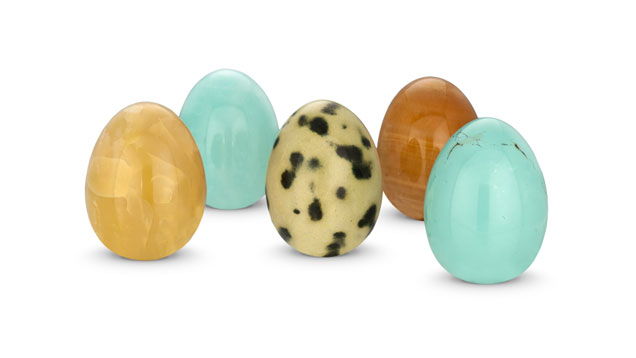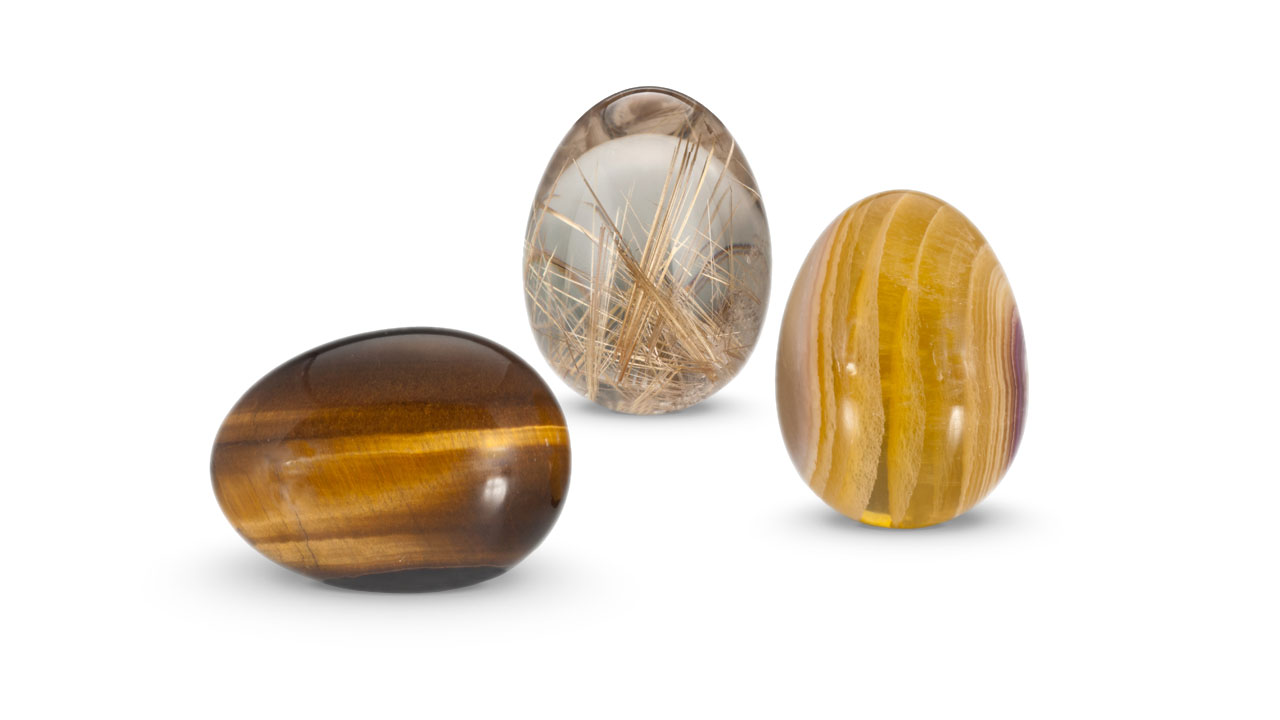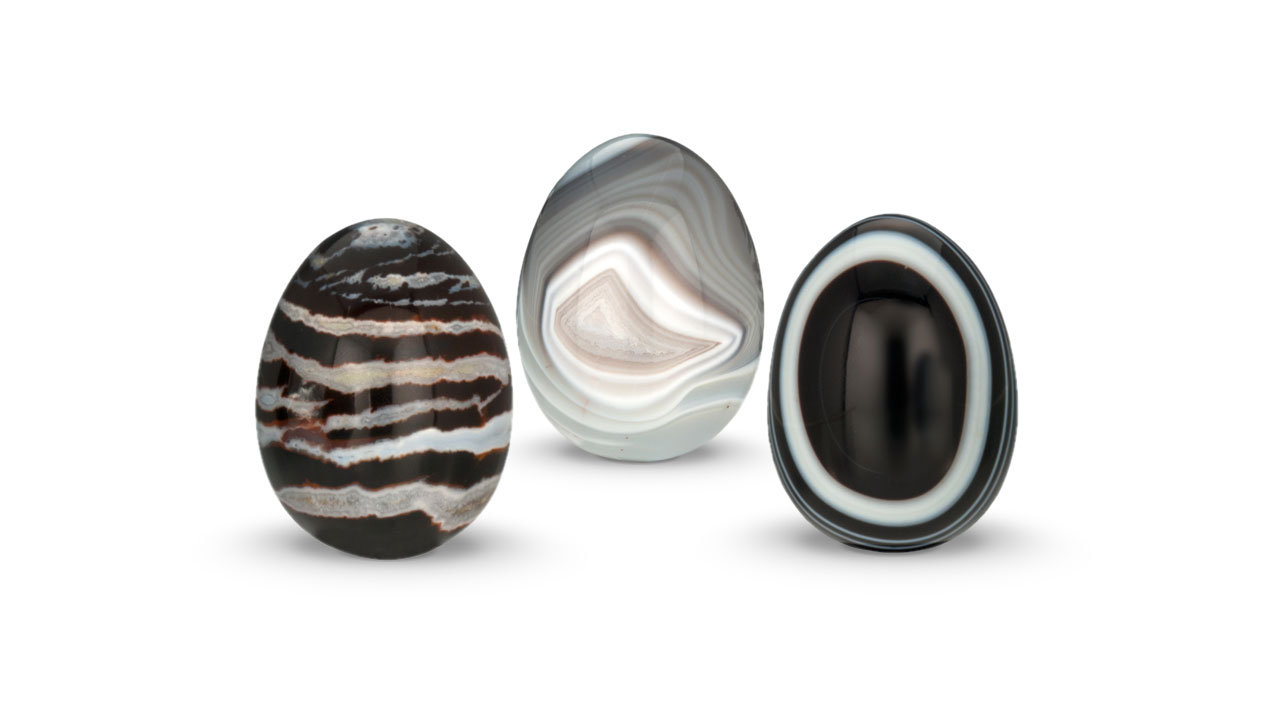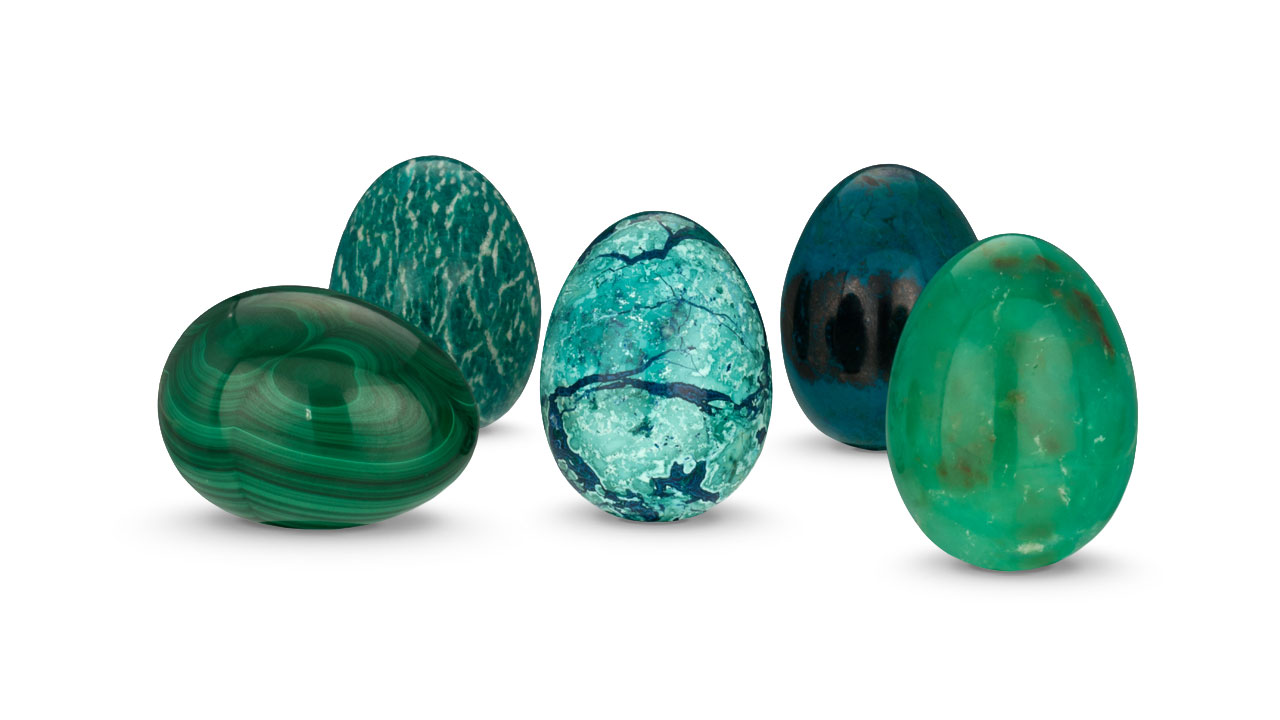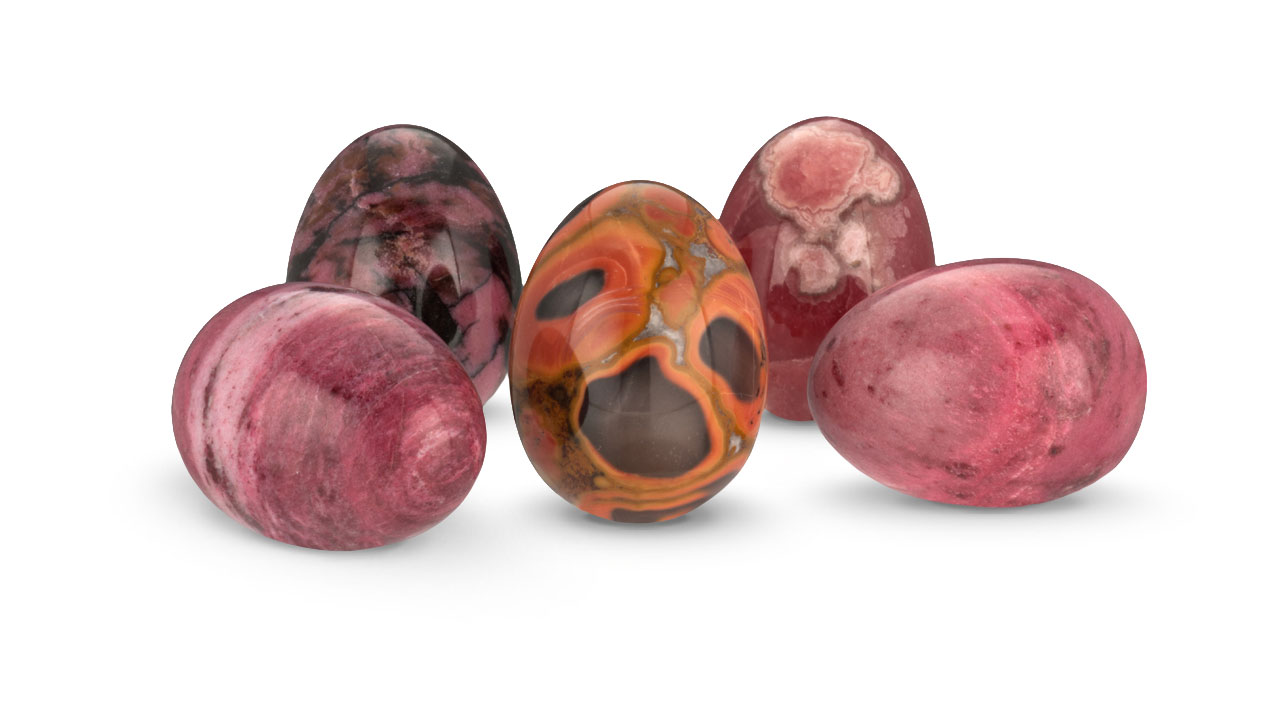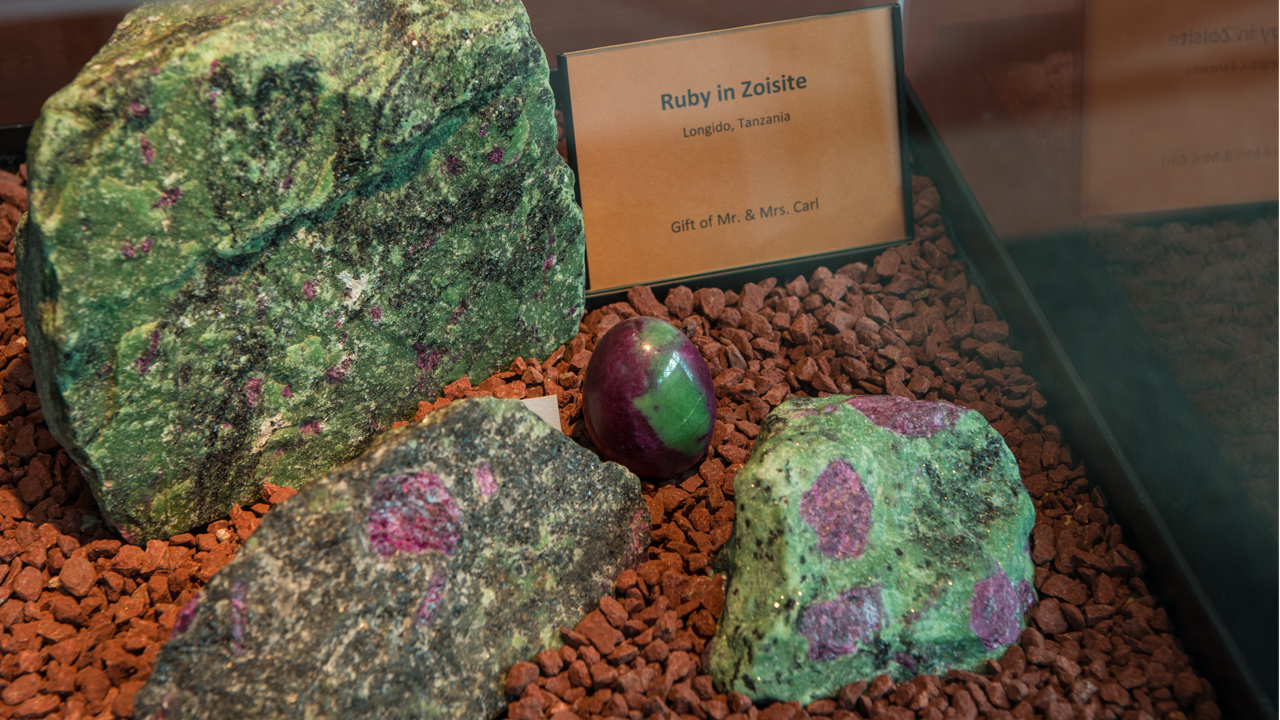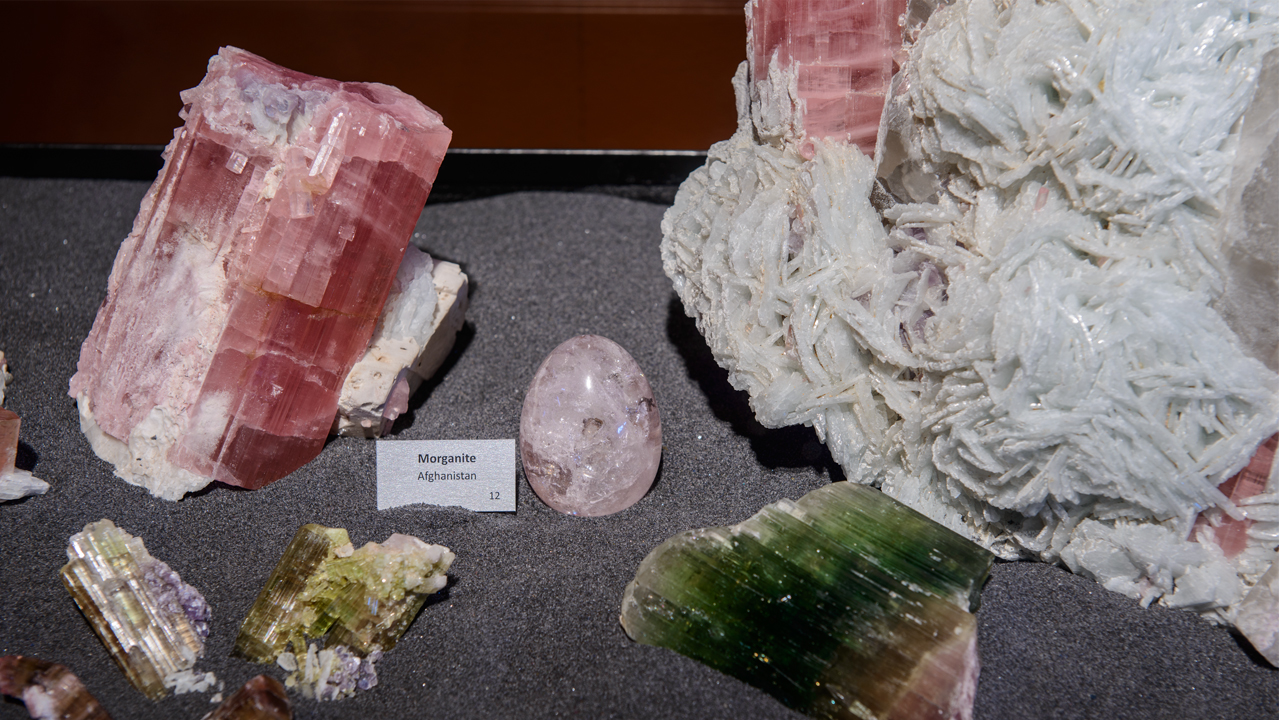Jerusalem Gem and Mineral Eggs Represent a Life’s Work
April 14, 2014
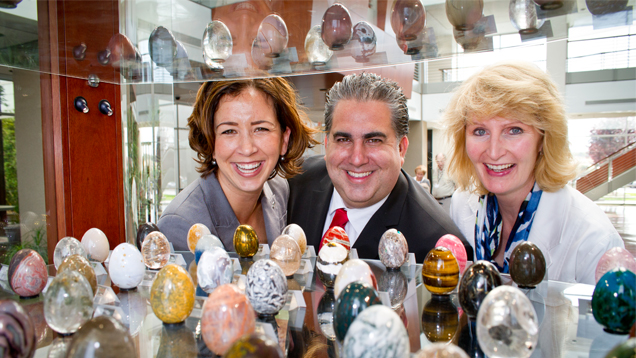
This was the first time the collection, created by Dieter Jerusalem, a master cutter from Idar-Oberstein, Germany, had been on display in the U.S. Jerusalem spent 40 years collecting, cutting and polishing the materials he used to create the eggs. Many are made from rare or unusual materials or from deposits that have been mined out. Each is cut to maximize the feature characteristics of the material and is the exact size of a perfectly formed hen’s egg.
“It’s a collection of a lifetime of work,” said Hyman a wholesale jeweler from Philadelphia who helped the owner, a client and friend, acquire the Jerusalem Collection when it was auctioned in 2010. “It represents thousands and thousands of hours of work of a human’s life. He is obviously someone of great talent and great dedication.”
The precious gems and decorative minerals represented by the eggs come from noteworthy locations around the world, including Idar-Oberstein agates; pink tourmaline from Pala, California; Brazilian morganite and aquamarine; green beryl from Madagascar; Nigerian rutilated quartz; Canadian native silver in matrix; Swiss jadeite; and Australian variscite. Phenomenal gemstones, jaspers, agates and quartz with unusual inclusions are also represented.
“If you think about the circumstances of events that created these eggs – from the chemicals mixing in the earth a billion years ago, to the material traveling to the earth’s crust until it finally came close enough to the surface for a miner in some country to discover it, and how it wound up in Germany where this man decided to make an egg – that’s a pretty amazing journey,” Hyman said.
“This collection is a really great representation of what Mother Nature is capable of,” he said. “They are such a spectacular display of color, rare gemstones and decorative minerals. They are beautiful.”
Hyman wanted to make sure the greatest number of people had the opportunity to see and appreciate the eggs.
“If you have any love for gemology, it’s actually an emotional experience to see them all displayed,” he said. “It’s like any piece of art – if you stop to try to appreciate it and understand it, it’s extremely impressive.”
His wish is that students, staff and visitors were inspired by the collection. “Hopefully they didn’t just look at the form, the quantity, or even the multitude of colors. We hope they saw the bigger picture -- all of the different possibilities life has to offer,” he said.
Having helped get the Jerusalem eggs on display for students and visitors at GIA to see means the world to Hyman.
“If you really care about life, it’s not just about making money. It’s about who you are and what you do,” he said. “This is the kind of thing that makes you feel really successful.”

Hundreds of carved gem and mineral eggs lined the cases of GIA’s museum in Carlsbad, CA for the Egg-Stravaganza exhibit. Courtesy Jay Walker, curator of the Library of the History of Human Imagination. Photo by Orasa Weldon/GIA
About the Author
Amanda J. Luke is a senior communications manager at GIA. She is the editor of the GIA Insider and Alum Connect and was the editor of The Loupe magazine.
